|
|
|
Sort Order |
|
|
|
Items / Page
|
|
|
|
|
|
|
| Srl | Item |
| 1 |
ID:
184155
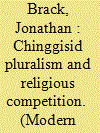

|
|
|
|
|
| Summary/Abstract |
This article argues that the Mongol empire's famous religious tolerance cannot be explained solely through its adoption of Inner Asian imperial political traditions of ruling over ethnically and religiously diverse subjects. Instead, this pluralism can be ascribed to a wider religious pattern of the Mongols. The first part argues that the analytical category of immanentist religions explains not only the inter-cultic transparency exhibited by the Mongol courts, but also the few explicit instances where the Chinggisid rulers reacted with ‘religious’ violence. The article further explores the strategies employed by the religious vectors, mainly Buddhists and Muslims, to address, accommodate, and subvert the Chinggisids’ patterns of religiosity and primarily their pluralism, and the Mongols’ deified mode of sacralizing kingship. Focusing on the Mongol-Ilkhanid court in Iran, the article examines how religious representatives used conceptual affinities and equivalences between the Mongol traditions and certain principles of their own religious frameworks to gain influence and favour, and persuade the khans to convert or retain their earlier commitment to the new religious affiliation. Employing this assimilative approach, they manoeuvred within the religious, immanentist paradigm of their nomadic patrons while moulding and manipulating it to their own religious, transcendentalist ends. The article further demonstrates how this ‘translation’ process of Chinggisid patterns became an arena of Buddhist–Muslim rivalry and competition, but also cross-cultural fertilization.
|
|
|
|
|
|
|
|
|
|
|
|
|
|
|
|
| 2 |
ID:
108237
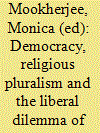

|
|
|
|
|
| Publication |
London, Springer, 2011.
|
| Description |
xiv, 187p.
|
| Standard Number |
9789048190164, hbk
|
|
|
|
|
|
|
|
|
|
|
|
Copies: C:1/I:0,R:0,Q:0
Circulation
| Accession# | Call# | Current Location | Status | Policy | Location |
| 056324 | 318.8/MOO 056324 | Main | On Shelf | General | |
|
|
|
|
| 3 |
ID:
001860
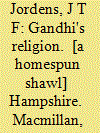

|
|
|
|
|
| Publication |
Hampshire, Macmillan, 1998.
|
| Description |
ix, 283p.Hbk
|
| Standard Number |
0333720717
|
|
|
|
|
|
|
|
|
|
|
|
Copies: C:1/I:0,R:0,Q:0
Circulation
| Accession# | Call# | Current Location | Status | Policy | Location |
| 042842 | 923.254/JOR 042842 | Main | On Shelf | General | |
|
|
|
|
| 4 |
ID:
131481
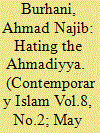

|
|
|
|
|
| Publication |
2014.
|
| Summary/Abstract |
Religious diversity and pluralism is commonly understood within the context of the relation between various religious traditions, not within a single religious tradition. This limitation of the boundary of religious pluralism could overlook the fact that conflict within a single tradition can be bitterer and more disastrous than conflict with other religions. In the last decade, for instance, the Ahmadis in Indonesia have become victims of constant attacks. This article, therefore, intends to study the place of the Ahmadiyya in the context of religious pluralism in Indonesia by answering the following questions: Why was the treatment of the Ahmadis in recent years by Muslims more vitriolic than their treatment of non-Muslims? What is the nature and quality of life for people who have been excluded from a 'normal' religious identity in a time when religious attachment is a necessary fact for that society? Why did the attacks on the Ahmadiyya occur in the present regime, not during the past authoritarian one? This article argues that the charge of heresy issued by Muslim institutions put the Ahmadiyya in liminal status; they are in the zone of indistinction between Muslims and non-Muslims. This makes them vulnerable to persecution since they have been deprived of their rights as Muslims, while their rights as non-Muslims are still suspended. Non-Muslims, particularly ahl al-kit?b (People of the Book), have been accepted theologically in Muslim society, but there is no place of tolerance for heretics. The rise of intolerance in Indonesia parallels the rise of religious conservatism after the fall of Suharto in 1998.
|
|
|
|
|
|
|
|
|
|
|
|
|
|
|
|
| 5 |
ID:
073032
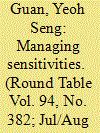

|
|
|
| 6 |
ID:
067993
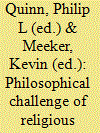

|
|
|
|
|
| Publication |
New York, Oxford University Press, 2000.
|
| Description |
vii, 243p.
|
| Standard Number |
0195121554
|
|
|
|
|
|
|
|
|
|
|
|
Copies: C:1/I:0,R:0,Q:0
Circulation
| Accession# | Call# | Current Location | Status | Policy | Location |
| 050844 | 291.172/QUI 050844 | Main | On Shelf | General | |
|
|
|
|
| 7 |
ID:
137407
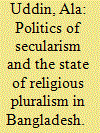

|
|
|
| 8 |
ID:
124655
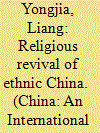

|
|
|
|
|
| Publication |
2013.
|
| Summary/Abstract |
Over the past three decades, Chinese "ethnic areas" (minzu diqu) have experienced widespread religious revival. Religious populations are steadily increasing as the religious infrastructure expands under governmental or non-governmental sponsorship. The restoration of sacred sites appeals to the larger ethnic populations for reasons relating to community and identity (re-)creation. The officially recognised religions are reviving different regimes of transcendence in the ethnically diversified localities. Unofficial, transnational, or radical movements and denominations are engaging in activities either in the sphere of underground proselytising or non-governmental organisation (NGO) instruments. Popular religions are being legitimised through ethnic renaissance and are being embraced by astonishingly large populations. They are also being commercialised by local state agents who are given incentives to generate revenue by translating invented traditions into tourist attractions. Ancestor veneration and the Daoist rituals of consulting almanacs, geomancy, horoscopes and spirit mediums are seasoned with ethnic flavour. However, growing social, political and economic disparities are engendering greater anxiety among people who are seeking answers through the old ways such as oracle reading, mask dances, sutra chanting or karma fairs. The flow of capital, symbols, ideas and practices nationally and globally also poses unprecedented problems of religious pluralism in these increasingly mobile multi-ethnic areas.
|
|
|
|
|
|
|
|
|
|
|
|
|
|
|
|
| 9 |
ID:
165006
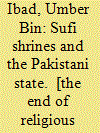

|
|
|
|
|
| Publication |
London, I B Tauris and Co. Ltd, 2019.
|
| Description |
xiii, 245p.hbk
|
| Series |
Islamic South Asia Series
|
| Standard Number |
9781788311816
|
|
|
|
|
|
|
|
|
|
|
|
Copies: C:1/I:0,R:0,Q:0
Circulation
| Accession# | Call# | Current Location | Status | Policy | Location |
| 059627 | 297.8/IBA 059627 | Main | On Shelf | General | |
|
|
|
|
| 10 |
ID:
184151
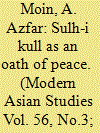

|
|
|
|
|
| Summary/Abstract |
Sulh-i kull or ‘Total Peace’ with all religions was a policy introduced by the Mughal empire in South Asia in the late sixteenth century. It was a radically accommodative stance for its day, especially when compared to the intolerant manner in which other Muslim and Christian polities of the early modern world dealt with religious difference. This article introduces a new perspective on Mughal Total Peace by arguing that it was meant to solve a long-standing problem created by the monotheistic ban on oaths sworn on non-biblical deities. Such a ban restricted the ability of Muslim kings to solemnize peace treaties with their non-monotheist rivals and subjects. In the second half of the article, I examine two pre-Mughal cases, from the eleventh century (Mahmud of Ghazna) and the seventh century (the prophet Muhammad), respectively, to explore what other, less ‘total’, mechanisms were invented to suspend this ban and enable oath-taking and solemn peace-making between monotheist and non-monotheist. In effect, I use the Mughal case to highlight a specific issue that shaped political theology in Islam over the long term.
|
|
|
|
|
|
|
|
|
|
|
|
|
|
|
|
| 11 |
ID:
093956
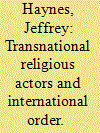

|
|
|
|
|
|
|
|